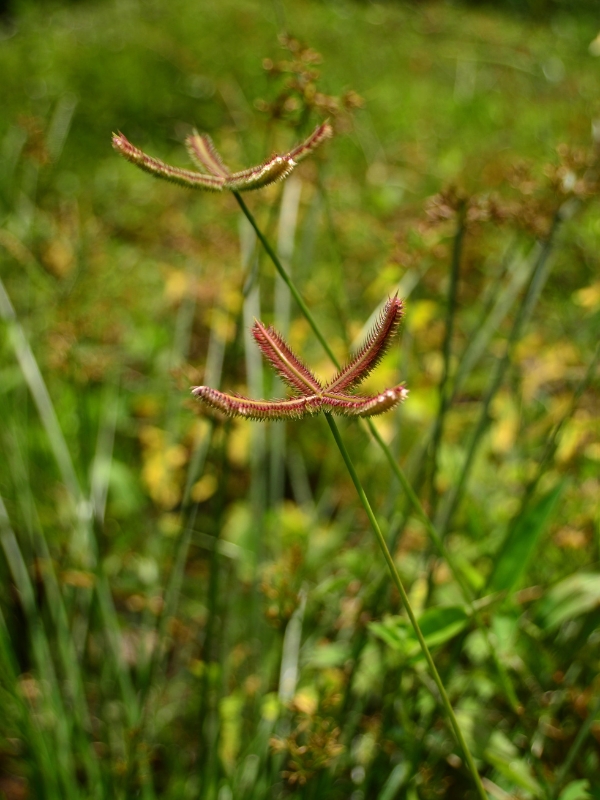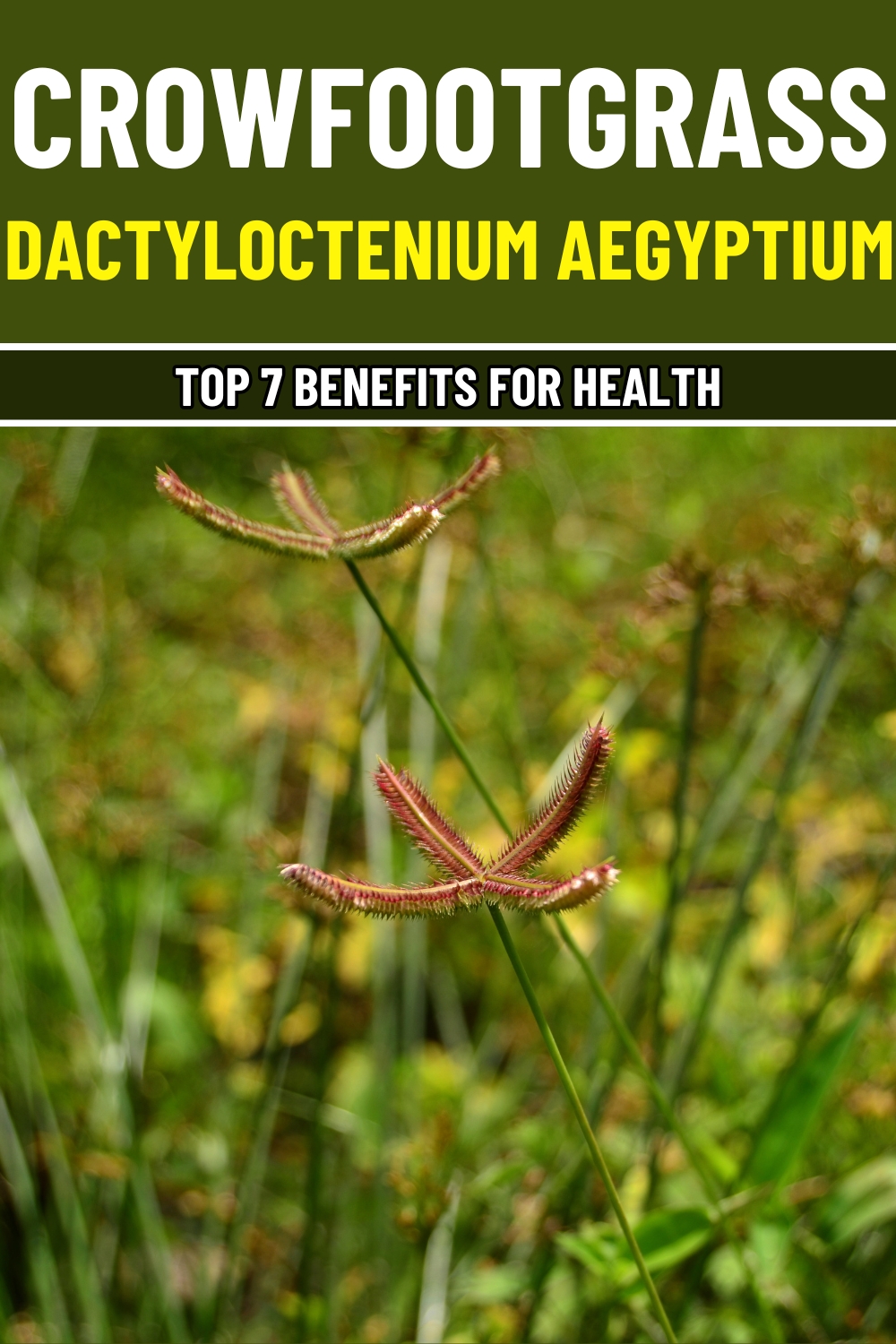Crowfootgrass (Dactyloctenium aegyptium), often dismissed as an invasive weed, is a hidden gem in natural remedies.
With a rich history in traditional medicine, this unassuming plant offers powerful health benefits ranging from wound healing to digestive support.
Dive into the extraordinary properties of Crowfootgrass and discover why it deserves a spot in your natural remedy toolkit.
#1. Antioxidant Powerhouse
Crowfootgrass contains phenolic compounds and flavonoids, potent antioxidants that help combat free radicals in the body.
Free radicals can cause oxidative stress, leading to cell damage, premature aging, and chronic illnesses like cancer and heart disease.
Research in Antioxidants Journal highlights the significant free radical-scavenging properties of Crowfootgrass extracts, making it a natural shield against oxidative damage.
Consuming teas or infusions made from Crowfootgrass may provide protective effects for cellular health.

#2. Anti-inflammatory Properties
The bioactive compounds in Crowfootgrass, such as saponins and tannins, contribute to its anti-inflammatory effects.
These compounds reduce the production of inflammatory markers, making Crowfootgrass useful for alleviating pain, swelling, and redness associated with minor injuries, sprains, and skin conditions like eczema.
Traditional remedies often involve applying a paste of Crowfootgrass to inflamed areas to speed up recovery.
Emerging studies suggest that these anti-inflammatory benefits could be valuable for managing chronic inflammatory conditions like arthritis.
#3. Antimicrobial Defense
Crowfootgrass has demonstrated significant antimicrobial activity against pathogens, including Escherichia coli and Staphylococcus aureus.
This makes it a natural choice for managing minor infections and preventing bacterial growth in wounds.
A study in the Journal of Medicinal Plants Research found that Crowfootgrass extracts inhibited the growth of several bacteria, validating its use as a natural antiseptic.

#4. Digestive Health Booster
Crowfootgrass is a traditional remedy for digestive disorders like bloating, constipation, and diarrhea.
Its high fiber content and bioactive compounds regulate bowel movements and support a balanced gut microbiome.
When brewed into a tea, Crowfootgrass stimulates the secretion of digestive enzymes, easing the breakdown of food and reducing discomfort after meals.
#5. Enhances Wound Healing
The wound-healing properties of Crowfootgrass stem from its combined anti-inflammatory and antimicrobial effects.
When applied as a paste or infused oil, it not only accelerates the healing process but also prevents infections in minor cuts, burns, and scrapes.
Traditional healers often recommend this plant for first aid due to its ability to promote tissue repair.
Scientific studies support its efficacy in stimulating skin regeneration, making it a valuable natural remedy for external injuries.

#6. Blood Sugar Regulation
Emerging research suggests that Crowfootgrass may have anti-diabetic potential. The plant contains compounds that appear to improve insulin sensitivity and regulate glucose metabolism, helping maintain stable blood sugar levels.
While more studies are needed, early findings indicate that consuming Crowfootgrass tea may be a complementary approach for managing diabetes. However, it should not replace prescribed medications.
#7. Respiratory Relief
Crowfootgrass has long been used to alleviate respiratory issues such as coughs, colds, and sinus congestion. Its soothing properties help clear airways, reduce mucus buildup, and provide relief from chest tightness.
Steam inhalations infused with Crowfootgrass can help ease breathing difficulties, especially during colds or allergy season. Its ability to reduce inflammation in respiratory pathways adds to its effectiveness.

How to Use Crowfootgrass
1. Digestive Support with Crowfootgrass Tea
To use Crowfootgrass for digestive health, prepare a simple tea.
Wash a handful of dried Crowfootgrass, then boil it in 2 cups of water for about 10 minutes. Strain and drink the tea warm.
This infusion helps ease bloating and promotes healthy digestion. Drinking it once daily can regulate bowel movements and improve gut health.
2. Wound Healing and Antimicrobial Applications
For minor cuts and scrapes, grind fresh Crowfootgrass leaves into a fine paste.
Apply the paste directly to the affected area and cover with a clean bandage. Leave it on for about an hour before washing it off.
Repeat this twice daily for faster healing. The antimicrobial properties of Crowfootgrass help keep infections at bay while promoting tissue repair.
3. Skin-Soothing Poultice for Inflammation
Create a soothing poultice by blending Crowfootgrass leaves with a small amount of water.
Spread the paste on irritated or inflamed skin, such as areas affected by rashes or insect bites. Cover with a soft cloth and leave it on for 30 minutes. Rinse off gently with lukewarm water.
This natural remedy can reduce redness, swelling, and itching.
4. Respiratory Relief with Steam Inhalation
For relief from sinus congestion or respiratory discomfort, add a handful of fresh or dried Crowfootgrass to a pot of boiling water.
Remove the pot from heat and place your face over the steam, covering your head with a towel. Inhale deeply for 5–10 minutes.
This practice helps clear nasal passages and soothes inflamed airways.

Cautions and Precautions
Ensure you correctly identify Crowfootgrass to avoid confusion with harmful plants.
Overconsumption or overuse can cause adverse effects, particularly in those with sensitive systems.
Harvest only from pesticide-free areas to avoid contamination.
Disclaimer
This article is for informational purposes only and does not constitute medical advice.
Always consult a healthcare professional before using Crowfootgrass or any other herbal remedy, especially if you are pregnant, nursing, have underlying health conditions or are taking medications.

7 Incredible Ways Crowfootgrass Can Improve Your Health
